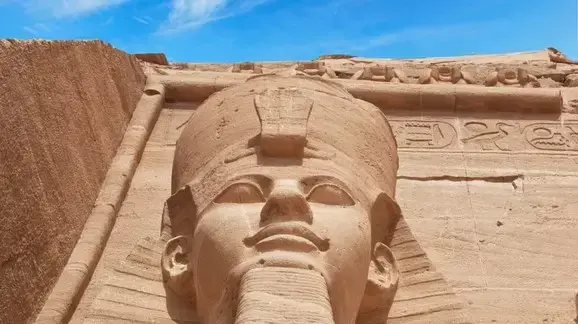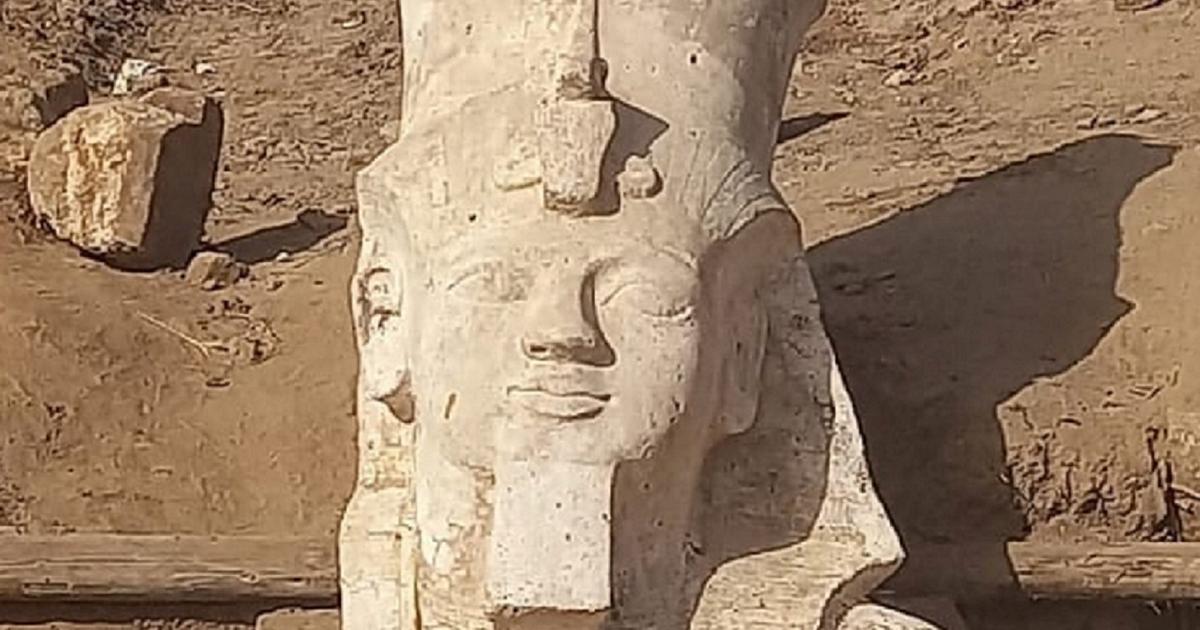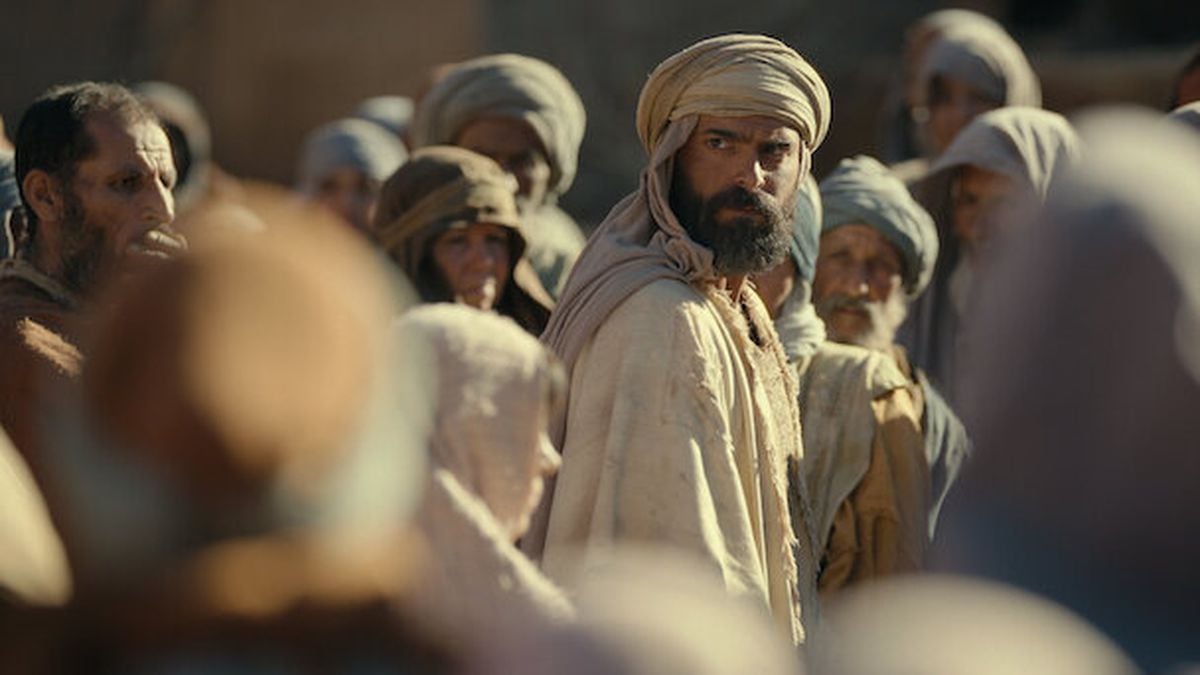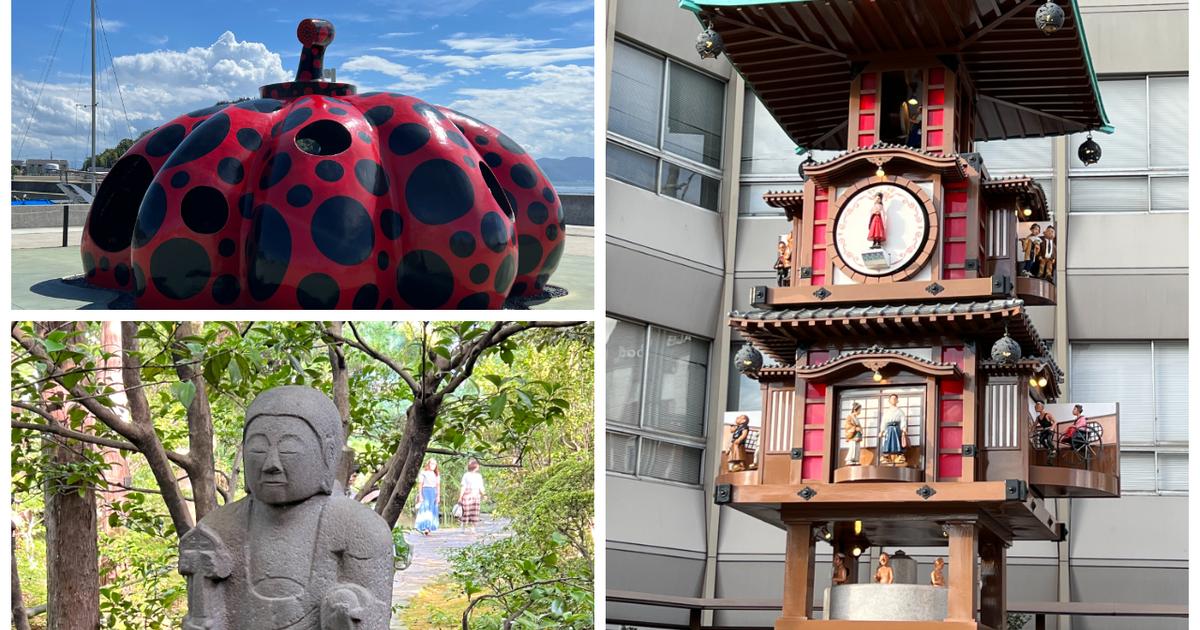A virtual tour following Ramses II in the Abu Simbel Temple in Egypt (Photo: Matterport, Egyverse)
Is it possible to point to findings in antiquities that were uncovered in Egypt as being related to the story of the Exodus?
Do we know how to identify Pharaoh, the king of Egypt?
Well, it is very difficult to put one's finger on definite data related to the famous story of the Exodus from Egypt, which according to different opinions took place between the 15th and 13th centuries BC. Even regarding the identification of Pharaoh, the king of Egypt - the researchers disagree. This is not the place to go into to this dispute, but it can be said that many point to Ramses II, the great Egyptian king who reigned over Upper and Lower Egypt for 66 years, as the pharaoh of the time of the Israelites. More about Egypt: Look how the
tomb
of
Tut
Ankh Amon looks like, after 9 years of
magnificent tomb renovation
4000 years old in Egypt opens to the public to visit
the great discovery of the 21st century: has the tomb of Queen Cleopatra and her lover finally been found?
According to some opinions, it took place between the 15th and 13th centuries BC. Exodus from Egypt (Photo: ShutterStock)
Is this Pharaoh from the Exodus?
Ramses II statue in Memphis, Cairo (Photo: Ziv Reinstein)
King for 66 years over Upper and Lower Egypt.
Ramses II in the Abu Simbel Temple (Photo: ShutterStock)
The temple that was cut and moved intact
In the virtual tour (in the video above) where we will tour in 3D using the Matterport website and the Egyverse website, we will enter one of the impressive temples built by Ramses near the southern border of Egypt -
the Abu Simbel temple
.
Some of the symbols and paintings found in the temple will surprise us with how close they are to the verses of the Torah, which describe Pharaoh, the king of Egypt.
The Abu Simbel temple, built over 3000 years ago during the 19th dynasty, has survived the past thousands of years, until our time.
In the 1970s, Egyptian President Gamal Abdel Nasser built the Aswan Dam on the Nile River and the "Nasser Lake", named after him.
The lake threatened to flood the ancient temple, so in an extraordinary international operation the world rallied to save the mighty and ancient temple in one of the biggest operations done to preserve history.
The rescuers cut the temple into thousands of pieces and moved them from their place, building it about 60 meters higher on the west bank of the Nile.
Today the temple is located inside an artificial hill, which allows tourists and us to enter the temple and be impressed by its beauty and power.
Built over 3000 years ago.
4 statues of Ramses II in front of the Abu Simbel Temple (Photo: ShutterStock)
Egyptian gods and Ramses on his chariot can be seen on the inner walls of the temple (Photo: ShutterStock)
The sun rises inside the temple twice a year
The first sight we will encounter upon our arrival at the temple is the front of the temple.
Four statues in the image of Ramses at a huge height of several tens of meters, next to him are smaller figures of his family members, and above them, above the entrance of the temple, a statue of small dimensions - the Egyptian god the head: Amon-Re.
There is no mistaking the interpretation of this sight, Ramses wants to tell everyone who passes by the temple or who enters it, who owns the house on the nearby Nile, who owns the house on all of Egypt.
In fact, it is difficult to find a more striking description of Ramses' expression than the verse in the book of Ezekiel addressed to Pharaoh, the king of Egypt: "Behold, I
am upon you, Pharaoh, king of Egypt, the great devil lying in his midst, who said to me, ``Iry, and I will do it.''
(Ezekiel 29:3). That is, my son, I made him (so in verse 9) and in fact I also made myself. The cynicism that emerges from this saying towards Pharaoh mocks the excessive pride of Pharaoh who made himself huge and great in his own eyes. A similar feeling appears before the visitor to the temple in front of us.
We will enter the Holy of Holies of the temple - towards the place where the sun shines into it twice a year - on the birthday of Ramesses and on the day of his reign. In the Holy of Holies sit four statues. Three of them are gods. In the center is the figure of Ramesses II (third from the left) and next to him in the same Height, again the main god of Egypt: the god Amun-Ra. Ramses sitting among the gods, this is the representation that Ramses leaves for future generations.
And where did Ramses get his strength, what is it evident? We will go to the inner walls of the temple. We will see Ramses on his chariot in his many wars in Egypt and beyond. These reliefs seem to have been taken from the song of the sea that is said every day and is sung on the last day of Passover:
"I will sing to the Lord that a horse is proud and its rider is high in the sea... because Pharaoh's horse has come with his chariot and his horsemen
. "
Holy of holies.
Inside it sit three gods, in the center (third from the left) Ramses II (Photo: ShutterStock)
The temple was cut into thousands of pieces and rebuilt on the west bank of the Nile (Photo: ShutterStock)
Inside the Abu Simbel temple.
In the last room is the Holy of Holies (Photo: ShutterStock)
God's revenge on Pharaoh
We will move to another wall, and observe Ramses' cruel behavior towards his enemies.
On the wall: Ramses holds in his left hand the heads of his enemies and in his right hand he picks up a stick with a metallic ball at the top, with which he smashes the heads of his enemies.
These descriptions seem to clarify the details of the verses sung in the Song of the Sea:
"Your right hand, O Lord, I will praise, by the
strength of your right hand, O Lord, you will crush the enemy" (15:6). The verses of the poem talk and respond, therefore, to the wall paintings discovered inside the temple of Ramses II.
And the last scene we will be asked to see in the temple is perhaps the most detailed and surprising of all. The description of the camp of Ramses II in one of the famous battles in the history of the Egyptian kingdom -
"Battle of Kadesh"
- where Ramses II fought the Hittites, a distance of thousands of kilometers from the site of the temple in front of us.
In many places Ramses recorded the battle, which as far as we know, did not have an impressive victory, but at most ended in a draw.
All this did not prevent Rameses from recounting and describing in great detail his achievements in battle.
The image of Ramses' camp reminds us, it seems, of the image of the Mishkan depicted in the book of Exodus chapter 25, as Prof. Yehoshua Berman teaches us in his recent book, "I Believe" (Koren Publishing). Prof. Berman was good at pointing out the division of the camp into an outer courtyard , for internal help, which is divided into two unequal parts. In the eastern, larger part, prisoners kneel and bow to the inner western part of the camp. Inside the Holy of Holies is displayed a scarab (the symbol of the pharaonic kings) in which the name of Ramses II is written. On both sides of the scarab, cherubs that cover with their wings Ramses It is hard not to draw a resemblance between this structure and the Mishkan structure described in the book of Exodus.
It seems that here, too, the descriptions in the Torah respond and perhaps become flamboyant with the image of the pharaohs in general, and it is possible that Ramses was asked in particular.
You are a Ramses who describes yourself as best you can and does not recognize the reality of God and His leadership, you will be defeated in the war against Him.
Your chariot will sink in the Red Sea.
And against the camp in which you boast, this tabernacle will be built in the image of your camp, within which will be placed the ark of God with cherubim covering with their wings.
Ramses holds in his hand a stick with a metal ball, with which he runs over the heads of his enemies (Photo: Ziv Reinstein)
Captives (perhaps from the appearance of Israelites?) tied with a rope around their necks, are led in a procession (Photo: Ziv Reinstein)
It seems, therefore, that many symbols that appear in this temple, send signals of symbolism towards the verses of the book of Exodus, which describe the story of the Exodus from Egypt and the events that followed them.
From the short tour of Abu Simbel, we learn more about the character of Ramses, or at least how he wanted to be known for thousands of years - as a tyrannical, cruel ruler of unparalleled power.
However, next to these images, the verses of the Bible resonate in front of these symbols, images and statues. The verses of the Bible are inflamed with the pride of the pharaohs and set against them a historical and religious alternative.
In front of the powerful and silent stone statues of the Egyptian king, the verses of the Passover Haggadah are read about that night when Israel left Egypt and challenged the Egyptian pharaonic monarchy, and set out for freedom that became a symbol for the entire world.
Rabbi Dr. Shuki Reis is the head of the
hatanakh.com project
,
the Herzog Academic College.
tourism
Travels in the world
the Middle East
Egypt
Tags
Exodus from Egypt
Passover
Temple





/cloudfront-eu-central-1.images.arcpublishing.com/prisa/4FLE5PNY3VBLRCDNGWKQRJSUN4.jpg)



